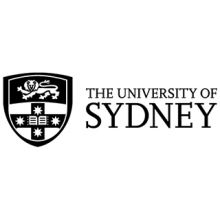Australia’s proposed performance funding scheme may require legislation and could therefore be blocked by parliament, a Sydney conference has heard.
Grattan Institute analyst Andrew Norton said that the “accumulating” nature of the scheme, under which up to 7.5 per cent of universities’ funding could be withheld unless they meet performance targets, suggested that the government would need to set up a “separate pot of money” to administer it.
This would necessitate a “legislative instrument” that theoretically might not be approved by the senate, Mr Norton told the Times Higher Education Australia Universities Forum at the University of Sydney.
Such a requirement could introduce an “extra political bargaining element to this which doesn’t exist when they just use funding agreements”.
The separate account could be good news for universities grappling with declining enrolments, Mr Norton added. He said that under the arrangements originally envisaged for performance funding, institutions would receive small top-ups to the entitlements that they had accrued under the now-abandoned demand-driven funding system.
This meant that universities that had not enrolled enough students to reach the caps set in 2017, when the demand-driven system was axed, would not qualify for performance funding.
Mr Norton said such a restriction was likely to remain in force in 2020 but not in 2021, when the separate account was likely to be required – “which means [universities] can receive money even if they are not making their [enrolment] targets”.
But he said that those that received their full complements of performance funding would still be losing money year-on-year because the extra cash would not compensate for inflation.
This would leave universities struggling to meet a spike in demand caused by a steep increase in school-leaver numbers over the next few years.
“This is the single biggest medium- to long-term problem the sector has,” he said. “We are totally unprepared for this cohort.”
Universities Australia chief executive Catriona Jackson said that it would take time to bed down the details of the “very complex” performance funding scheme, including its administrative structure. “I think there may be a prospect that [the government] can do it without legislation,” she told the forum.
Ms Jackson said that her children were part of the “Costello baby boom”, a bulge in the youth population thought to have been triggered by the policies of then Australian treasurer Peter Costello early last decade.
“No one wants to explain to [young people] whose brothers and sisters went to university that they can’t because we as a nation can’t find a way of offering them a place,” she said.
“There is a growing understanding from government that this is a very substantial shared challenge – a challenge for universities and a challenge for government.”
Central Queensland University vice-chancellor Nick Klomp said that current university funding policies would exacerbate the participation gap between metropolitan and regional Australia.
Professor Klomp said that the youth population in Rockhampton, the regional city where his university is headquartered, was growing twice as fast as in the state capital Brisbane.
He said that regional Australia produced two-thirds of the country’s export wealth with about one-third of its population. “If we could get more participation in regional areas, we’d get more prosperity – you’d be extracting more talent from regional areas,” he said.
“I hope the government is hearing that, because it’s an opportunity for the country.”
Register to continue
Why register?
- Registration is free and only takes a moment
- Once registered, you can read 3 articles a month
- Sign up for our newsletter
Subscribe
Or subscribe for unlimited access to:
- Unlimited access to news, views, insights & reviews
- Digital editions
- Digital access to THE’s university and college rankings analysis
Already registered or a current subscriber? Login












